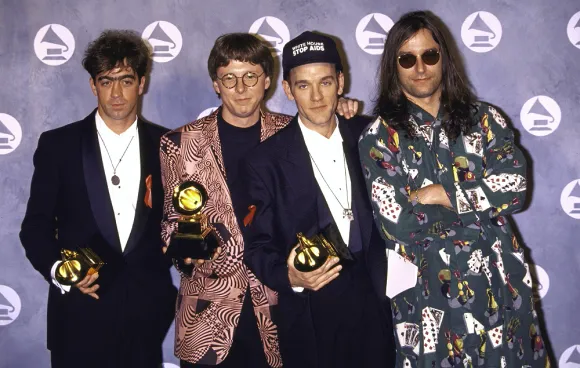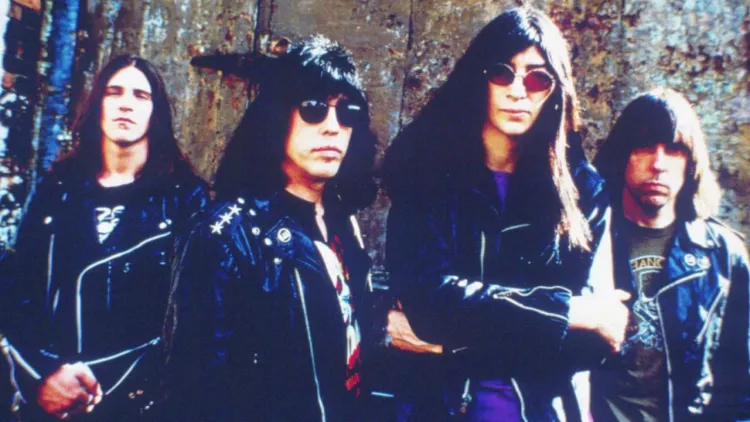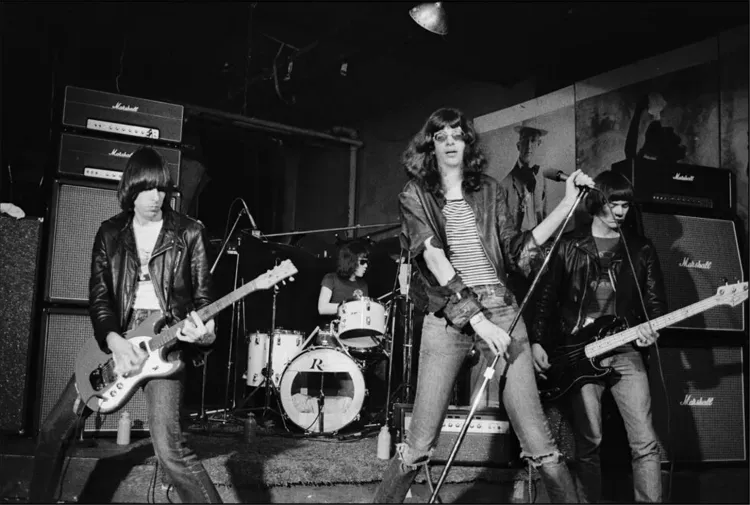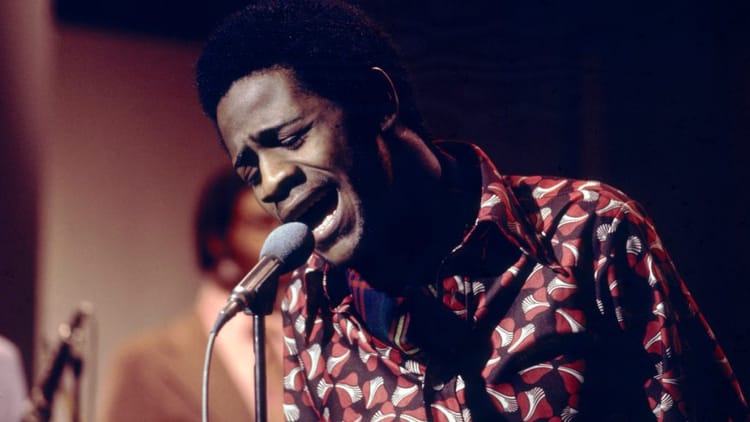R.E.M., pt. 2: Anthony's Album Guide

Part 1 is here. My handy dandy profoundly subjective numerical rating scheme is decoded here.
Green (1988) 9
Out Of Time (1991) 8
Automatic For The People (1992) 8
Monster (1994) 8
New Adventures In Hi-Fi (1996) 8
At the beginning of 1988, R.E.M. had its first platinum album, its first Top 10 single and was declared “America’s Best Rock & Roll Band” on the cover of Rolling Stone. Not bad for an arty quartet of UGA dropouts, and not a bad place from which to seek your second label deal. With Warner Bros promising the most creative freedom (and better international distribution), the band continued on their established prolific pace, returning to the studio less than a year after the release of Document.
The result, Green, finds the band reaching new peaks of bubblegum (“Stand” - another Top 10 hit - climaxes with two key changes) and new nadirs of art-rock. Green was also the first CD I ever bought with my own money, not gathering the band consisted of four white guys until I saw the liner notes (the videos for “Stand” and “Pop Song ’89” featured a diverse group of dancers). It’s the art-rock on Green where my life-long affection for the album clearly influences my assessment: if I knew the work of Leonard Cohen before I heard “World Leader Pretend,” and wasn’t a tween bullied over deformity when I heard “The Wrong Child,” I probably wouldn’t have tolerated either long enough to now hear them as moving metaphors for emotional breakthrough.
Yes, R.E.M. appears in their video for "Stand." No, that was not obvious when I first saw it.
While it’s unclear if his narrator is celebrating a wife & child or a pansexual thruple, Michael Stipe’s romantic magnanimity & devotion had never been more transparent than on “You Are The Everything” and “Untitled.” Despite my obviously sentimental perspective, the album’s gregariousness and arena-sized swagger is grand enough for me to call it their finest work anyway (they follow a raging bop about ‘Nam - featuring military chants! - with a hollered threat to “turn you inside-out” - featuring Keith LeBlanc on percussion!). I’ve come to love plenty of other sounds & styles in the decades since I bought Green, but that experience and information hasn’t made me love Green less.
After a year-long world tour of ever-bigger venues and another platinum wall display, the band took a long-deserved break of…six months or so. By Green, R.E.M.’s albums had already featured guest musicians, with Peter Buck, Mike Mills and Bill Berry respectively switching from guitar, bass and drums to mandolin, keyboard and bass on occasion. Stipe was even singing overt love songs at this point. But baroque, romantic studio-pop became the band’s raison d’être on Out Of Time, which Stipe even wanted to name Love Songs. The Booker T & the MCs energy of the opening “Radio Song,” featuring KRS-1, is as goofy as Hammer pants today. Thankfully, the rest of the album is a swoon-worthy, string-laden marvel of effervescent joy (“Near Wild Heaven,” “Shiny Happy People”) and heartfelt regret (the Top 5 hit “Losing My Religion,” the fan favorite “Country Feedback”). The Mike Mills spotlight “Texarkana” is too cornpone for my taste (stars falling from the sky as the spectacled sideman stands 20,000 miles from an oasis crying “catch me if I fall” before the band drops out for his bass hook, jfc) but I adore the interlude “Endgame” (Stipe singing a wordless hook over an orchestra before a flugelhorn joins him, jfc). As long as you can handle one of those fanciful foofaraws, or the closer where Stipe fantasizes Natalie Merchant is pregnant with his baby, you’ll probably think Out Of Time is a keeper.
The trailer for R.E.M. By MTV, well worth getting a free trial subscription for. Or buying!
The band chose to stay off the road, though MTV made sure to keep R.E.M. on everyone’s mind. The cable station endlessly played the ridiculously florid “Losing My Religion” video and the simply ridiculous “Shiny Happy People” video (featuring Kate Pierson of hometown heroes turned Top 40 compatriots The B-52’s), along with an episode of Unplugged and numerous news interviews. The band that once hid their faces behind moss, shadow and train footage now mimed to the camera, Stipe finally comfortable with lip syncing. The fantastic documentary R.E.M. By MTV, consisting entirely of interviews and footage from the Viacom vault, does a tremendous job of recalling the band’s crossover appeal (an opinion I’d have even if I didn’t go to film school with director Alex Young). With the station's help, R.E.M. helped countless bookish xennials too shy or too isolated for skateboarding learn about college/indie/alternative/underground cool. Proof? As I noted last time, the band’s READ poster promoting America’s Libraries is now available as a jigsaw puzzle. A poster they posed for before going multi-platinum. I can draw a direct line from owning Green to buying the Rolling Stone issue celebrating Out Of Time reaching number one to learning about the Velvet Underground to...*waves at my blog index*. I got clotheslined by a Color Me Badd fan screaming “R.E.M. sucks!” in elementary school, which only made me cling to my “Losing My Religion” cassingle tighter. Thanks to the band, I knew my day would come…most likely after high school.
This alterna-iconicity wasn’t just omnipresent, but surprisingly enduring. Most crossover college rockers found themselves blindsided by the “Gimmie Indie Rock!” paradigm shift signified by Nirvana’s Nevermind as much as hair metal bands were. After all, the alterna-sound of the ‘90s was supposed to be EMF’s “Unbelievable”…if not “Radio Song." Flower-print, not flannel. But R.E.M.’s enthusiasm for American underground guitar bands was paid back in kind, with Kurt Cobain considering them paragons of maintaining your cool on a major label. Out of Time more than doubled the sales of Green despite having more mandolins than power chords, though it was later revealed that Prince thought they dressed like farmers.
Tell me you're aware of grunge without playing grunge: R.E.M.'s "Drive"
Proving their comfort with the new zeitgeist, the video for 1992’s “Drive” found Stipe crowd-surfing as the band and its moshing fans were sprayed with firehoses. Despite that dramatic promo, Automatic For The People was actually more baroque studio-pop from dudes not remotely interested in doing concerts. Love songs were now replaced by death songs, however, as Stipe fantasized about euthanasia, advised against suicide, mourned family, wistfully recalled his first skinny-dip and reflected on the careers of Montgomery Clift and Andy Kaufman, the latter discovering heaven is a truck stop. The instrumental features e-bow and double bass instead of plucking strings and flugelhorn. “Drive” itself sounds like an ominous cross between David Essex’s “Rock On” and Led Zeppelin’s “Kashmir” (orchestral arrangement courtesy of John Paul Jones!) more than grunge pedal-stomping. Only “Ignoreland”’s vitriol about the possibility of four more years of Republican reign gets close to kicking out a jam, and only “The Sidewinder Sleeps Tonite” risks being bubblegum (I’ll never remember he’s not singing “come on in, tell the baker, ah” on the chorus). The album was huge, and some consider it their emotional peak. It’s certainly an improvement on Fables Of The Reconstruction, as far as attempts at somber artistry go. But they had higher highs and lower lows on Out Of Time, making this almost a merely moody MOR sequel.
If Kurt Cobain was the Jesus of alternative rock, I guess R.E.M. was John The Baptist - only instead of being beheaded, they got to do a valedictory world tour in the new normal their tragic hero created. The band had already decided to ROCK OUT WORLDWIDE with their next album, and was in the middle of recording Monster when news came of Cobain’s death. Ironically, between health emergencies, mourning friends (the album was dedicated to River Phoenix) and interband frustrations (I’m not sure when or why Mike Mills grew out his hair and started buying Nudie suits, but I wouldn’t be surprised if that aesthetic sea change inspired at least one tense meeting), it took them months longer than expected to make this back-to-basics move. I like to think to fellow ‘80s underground heroes turned ‘90s mega-sellers Metallica were subconsciously acknowledging their similar situation when they recorded “Some Kind of Monster.”
"What's The Frequency, Kenneth?" turns thirty this year, older than "Satisfaction" was when "Kenneth" came out. This Dad thinks it's a SUPER COOL song and video.
Aside from the near-shoegaze Cobain memorial “Let Me In,” the tempestuous birth of Monster isn’t that audible on the final product. First single and opening track “What’s The Frequency, Kenneth?” is as triumphant as a return to rocking gets: big open chords, stutter effects, a singer who gets what he means even if you don’t, a bassist right there with him, a backwards guitar solo and even a climactic holler of “don’t fuck with me!” R.E.M. had been off the road for the most dramatic period of their scene’s cultural ascendance, and somehow it looked like they hadn’t missed a note.
Monster - their third quadruple platinum album in a row - is now iconic for its omnipresence in used CD sections, which some would say is proof it’s crap. But who could think Monster is terrible and not think that about most multiplatinum 90s albums? And that still doesn’t explain why it was bought in the first place. I sincerely assume there was some “disco sucks” homophobia to the rejection, however subconscious. Some guys who dug the righteous rocking of “What’s The Frequency, Kenneth” (and appreciated the heteronormativity of the unprecedentedly foxy “Crush With Eyeliner”), probably didn’t enjoy a song that goes “I’m straight/ I’m queer/ I’m bi” followed by one that asks “do you give good head?,” soon followed by a falsetto fuck-ballad called “Tongue.” Stipe’s newfound comfort with explicitly queer eroticism couldn't have been appreciated by the mainstream rock crowd who’d soon buy even more copies of Creed’s My Own Prison. And not even the queer & queer-friendly necessarily wanted to see Michael Stipe do the white man’s twerk on Letterman.
R.E.M. on stage in Japan with alterna-dancers and a guy in a bear suit for the enjoyment of TOTP, and the agony of everybody who thought they sold out by 1987.
Personally, I think Monster has aged better than it looks. Where “Strange Currencies” initially struck me as a mere rehash of Automatic’s “Everybody Hurts,” I now hear it as a superior sequel to that ode to overcoming sadness. It’s Stipe speaking for a kid at a spring dance, passionately encouraging them to go get some now that they know their worth. My adolescent antipathy for the middling second single “Bang And Blame” remains, however. The downside of this experiment with loud’n’proud riffola is they couldn’t let the filler be merely lovely, turning the less zippy kiss-offs into a redundant trudge. But plenty of these kiss-offs are zippy, and static-fests like “Circus Envy” are subtly almost as sugary as “Stand.”
Any talk about Monster being an obvious misfire has the benefit of hindsight, as the 4 million sold and the following worldwide tour had Warner Bros giddy enough about the future to give the band a second five-album deal allegedly worth 80 million dollars. That the United States was so over alternagods became painfully obvious, though, when New Adventures In Hi-Fi somehow debuted at number 2 behind a New Edition reunion, another mature ‘80s act with hardly as impressive a contract. To be fair, Adventures was marketed as a semi-sequel to the previous smash, not unlike U2’s Zooropa: a patchwork of leftovers worked out on the road and some additional studio weirdness. That weirdness included first single “E-Bow The Letter,” where the Patti Smith vocal was probably less challenging for classic rockers than Stipe name-checking Maria Callas while imitating Blanche DuBois.
R.E.M. celebrating their Lifetime Moonman Award at the VMAs by playing a non-single that's catchier and rocks harder than the single. As was the fading style at the time.
Not quite long enough to be a hearty 2LP, but too bloated for a single, Adventures is taken as a Big Rock Testament like Led Zeppelin’s Physical Graffiti by some die-hards. It strikes me more as R.E.M.’s In Through The Out Door, not intended as a finale but benefiting from the poignancy. For better or worse, the live-during-soundcheck tracks mostly reveal a competent, ordinary ‘90s rock band. Sometimes it’s a little more transcendent than that (“Leave” manages to make a car alarm enjoyable for seven minutes), sometimes a little less (“Low Desert” having fans only makes sense to me because I know Second Coming by the Stone Roses has fans).
With three multi-platinum albums respectively centered on love, death and sex behind him, Stipe presents a mature, well-rounded self here: a little cryptic but hardly bashful, above but still enamored of the cool kids on “The Wake-Up Bomb,” tenderly accepting freak status on “New Test Leper.” Most affecting is the finale, “Electrolite,” where the shy art student who hoped the cool record store clerk would still be his friend after finding out he’s kinda gay is now a proud queer film producer in Los Angeles, still friends with those college buddies but ready to admit he’s outgrown Athens as a full-time residence. “I’m not scared,” he sighs filling out change-of-address forms, “I’m outta here.” It would have been real easy to prune two songs off as b-sides, but New Adventures makes a touching epitaph to an unprecedented rock career arc.
Only the arc wasn't over. Thanks to the back end of R.E.M. By MTV, I understand how the band found themselves breaking their long-held pact to split if any member wanted out. Bill Berry, who took them off the road in 1990, then demanded they go back on in 1994, then suffered an aneurysm on stage in Switzerland and got divorced after a decade of marriage, accepted he’d seen the top of the pop-rock mountain and was ready to be a gentleman farmer back in Georgia. He knew the other three were excited to spend some sweet advance money on an album full of loops and shit (as was the style in the late ‘90s), and said he’d be willing to stick around to keep the band going. But his bros loved him too much for that. So in 1997, Berry left the group and the remaining trio got their loops on with session drummers instead.
Bill and company sit their kids down for a hard talk on MTV News in 1997. Some say the '90s ended with 9/11, but for more than a few Gen X'ers, I bet it ended here.
As a human being capable of empathy, I get it. As an overly invested fan, I can’t pretend they didn’t kill a large part of the romantic appeal of R.E.M., with the choice rarely justified by the product. Remember in Part 1 where I said Mills made sure the music was beautiful, Berry made sure it held your attention, and Buck made sure it was cool? The five albums they made without Berry are often cool and beautiful, but rarely commanding. And I don’t even like to call them R.E.M. albums. The remaining trio finally broke up in 2011, when the 1996 mega-contract was fulfilled, aware no label would fund more recording on multiple continents without an Adele feature or something. It's a fact that underscores how this third phase of the band was overwhelmingly the result of misguided music industry largesse, not artistic inspiration. This is embarrassingly ironic, if not downright antithetical to the DIY spirit that got them to that point. But better letting it rest late than never, and I’m delighted I can now unabashedly enjoy when any of them are spotted hanging out at a concert. My R.E.M. is four friends who believed in their collective ability to make pop-rock beauty for beauty’s sake, and lived up to their law student buddy’s prediction about being bigger than the Beatles better than anyone could have dreamed. In a sense, that R.E.M. reunited in 2011, when the name referred to four friends again.
I’ve always told myself I wouldn’t write one of these posts (for free, at least) unless the era covered featured one or more albums that earn an 8. Nothing from How I Like R.E.M.: The Albums, pt. 3 would get higher than a 7. If enough pan-loving readers chant “do it, do it, do it” - or somebody wants to pay me to do it - it may happen. But if it doesn’t, feel free to pretend those albums didn’t get made, or look up a review by some kind soul who think they’re “fine” or inoffensive or whatever acknowledgment of the music’s inherent benignity gets them through the night. My goal wasn’t to be complete, but to convey how I like the band. And that’s easiest when I pretend the story stops here.
(Green and Out Of Time are respectively at 21 and 256 on My Top 300 Favorite Albums of All Time. I'm telling you this because I've found people are more inclined to discuss and share reviews if there's a quantitative element at the top or bottom they can easily debate. Prove me right!)
All comments and queries can be hurled to anthonyisright at gmail dot com.




